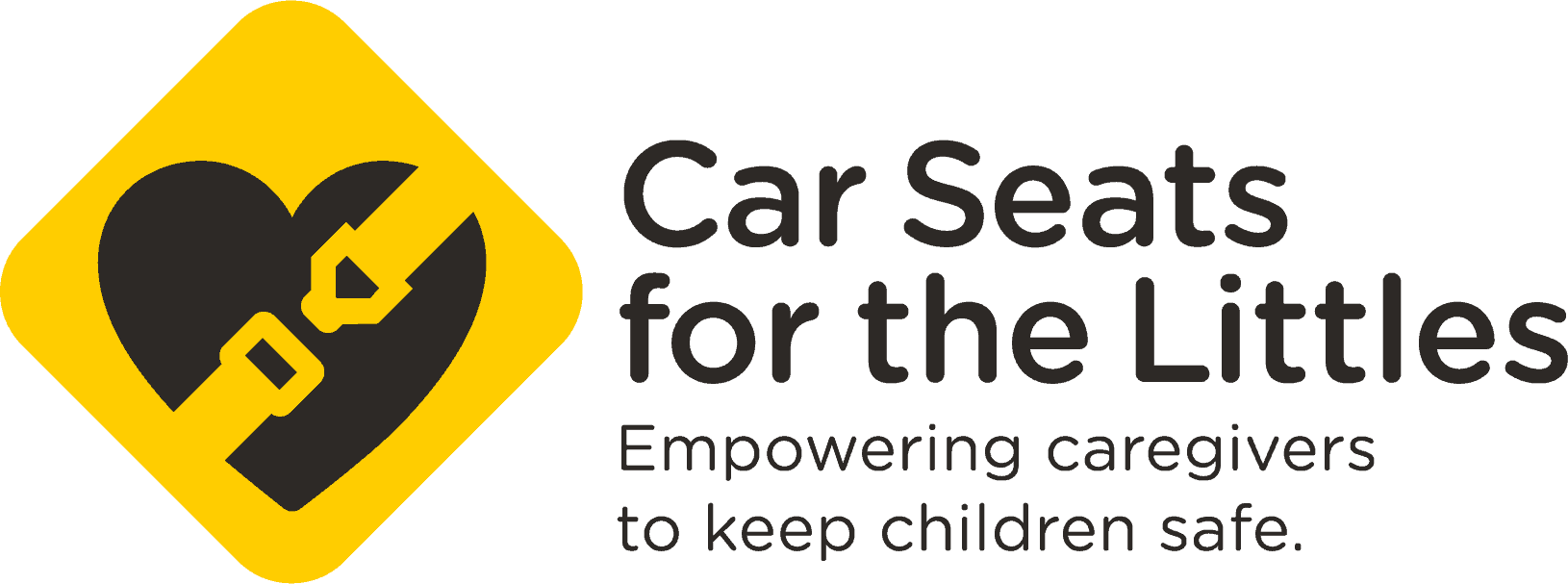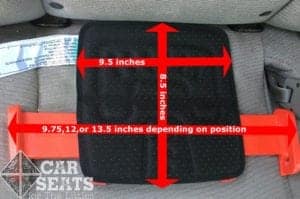Car seats and booster seats have evolved quite a bit since their earliest days. As the seats changed, the federal standards around them have evolved, too. Most of the time, this evolution occurred in parallel, with the manufacturers working together to develop or change the standard to accommodate new car seats or variations on existing seats. Safe Ride News has a very nice history of the development of car seats and testing standards that we’ve used as a reference in this update.
Because it falls outside of the range of a traditional booster seat, we have had concerns about the mifold booster since we first met a prototype in person. Initially, we were worried about the low lap belt fit on some children. In many cases, the lap belt lays flat across the child’s thighs rather than low on their hips, just touching the thighs the way a traditional booster would. In the time since the mifold launched, our concern has grown to include the twist in the vehicle seat belt at the seat belt buckle and now, that concern has grown even more.
IIHS did not include the mifold in its booster seat testing/ratings because it doesn’t directly fit into the description of a traditional booster seat. So we lack any confirmation from the IIHS regarding fit.
Transport Canada has updated their booster fit guidelines to include the following text:
The lap belt must fit snuggly (sic) on the hips. This will help the seat belt bring your child to a stop during a sudden stop or crash and protect your child from injuries.
- If the lap belt does not sit flat on the hips, choose another booster seat
The crux of our concerns with the mifold come down to improper positioning of the belt to allow the body to ride down the impact of a collision.
The mifold is a new product, and more independent research needs to be done. We recommend that caregivers looking for a backless booster seat choose one of the many traditional booster seat options on the market.

mifold — the solution for carpools?
Mifold’s creator envisioned a product that was ultra travel-friendly. A seat that’s small enough to fit practically anywhere so that it could always be available when needed. The resulting heightless booster seat is extremely compact! Small enough to fit in a glove box, console, backpack — almost anyplace where a child might need it.
CSFTL Quick Stats
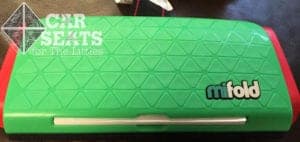
mifold
- Age Range 4-12 years old CSFTL recommends that children be at least 5 years old before moving to a booster seat and closer to 7 or 8 years old before moving to a backless booster seat.
- Weight range: 40-100 pounds
- Height range: 40″-57″
- Expiration: 7 years from the date of manufacture
- Vehicle headrest not required but support needed to the tops of the ears
Features
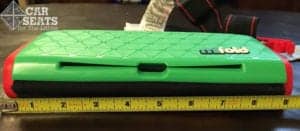
mifold measures 9 inches across the seating area
- Extremely compact
- Optional carry bag
- Large variety of colors
- Lightweight
Carpooling Essentials
- Not easy to set up without (very much or any) adult assistance

- Easy to carry

- Inconsistent belt fit>

Measurements
- Weight: 1.6 pounds
- Width at Setting 1: approx 9 ¾”
- Width at Setting 2: approx 12″
- Width at Setting 3: approx 13 ¾”
- Depth: approx 8.5″
- Folded: approx 9.5″ wide x 4.5″ deep x 1 ¾” thick
2016 IIHS Rating
The Insurance Institute for Highway Safety provides an annual roundup of booster seats, rating them on fit for by Best Bet, Good Bet, Check Fit, or Not Recommended. Check out their booster belt fit guidelines, which address where the booster should place the vehicle belt in relation to the child.
We offer the following quote from the IIHS:
“…the Mifold isn’t really a booster, despite its name. It is more accurately described as a belt-positioning device.”
The IIHS did not rate the mifold in their 2016 report.
Assembly
The mifold ships pre-assembled. To use the mifold, open it up, extend the belt guides to the appropriate setting by squeezing the red tabs on the underside of the seat, then adjust the shoulder belt positioning strap so that the clip sits approximately 1″ above the child’s shoulder. Unlike many shoulder belt positioning straps, this one easily clips around the seat belt rather than the seat belt being threaded through the guide.
Installation
Setup
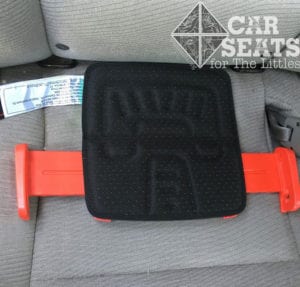
mifold Setting up
Setup is pretty straightforward. Simply unfold the mifold, then place it against the vehicle seat bight. The seat bight is the part of the vehicle seat where the horizontal and vertical parts of the seat come together.
The mifold sits all the way back on the vehicle seat. It’s important to ensure that the mifold doesn’t slide forward as your child sits down or buckles themselves in.
*Note: If you have a raised seat bight, the mifold will be positioned with back against the lower seat bight and not the true seat bight.
Extend the belt guides to the correct position. According to the manual, they should be on the closest position to the child’s body without touching the child’s body.
Have the child sit centered on the mifold and route the lap portion of the vehicle seat belt through both belt guides, then buckle the seat belt. Place the required shoulder belt positioning strap between the child’s back and the vehicle seat back, then adjust it until the guide falls approximately 1″ above the child’s shoulder. Many belt guides can be difficult to secure to the shoulder belt, but the mifold’s shoulder belt guide opens and closes like a large plastic chip bag clip so it’s fairly easy to use.
Waterfall/Contoured Seat Bight

Waterfall Seat Bight
A seat bight is the place where the vehicle’s seat back meets the vehicle’s seat bottom. Vehicle seat belts buckle in at the seat bight; lower anchors connect in this important space. As CPSTs, we joke that we do most of our work in the seat bight. Many vehicles have a flat seat bight where the vertical vehicle seat back meets the vehicle’s seat bottom at a 90 degree angle (give or take).
When used in this type of vehicle seat, the mifold can fit children well.
We ran into some issues with a waterfall, or contoured seat bight. This fairly common type of seat bight may offer additional comfort for adult passengers but it presents a long list of challenges when it comes to car seats. The mifold is no exception!
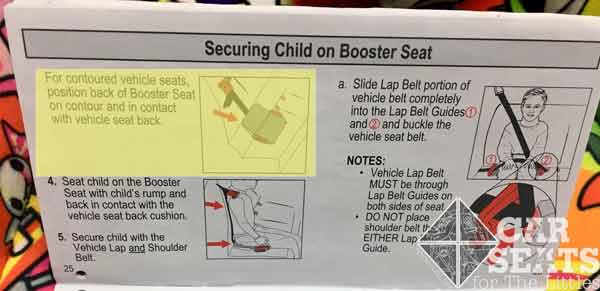
mifold Manual Contoured Seat Bight
The instructions and labels on the mifold itself do not address this type of vehicle seat. So it’s easy to imagine that caregivers would plop the mifold directly onto the vehicle seat and head out for a ride.
A flat mifold in a contoured seat bight IS mentioned in the mifold’s manual:
For contoured vehicle seats, position back of Booster Seat on contour and in contact with vehicle seat back.
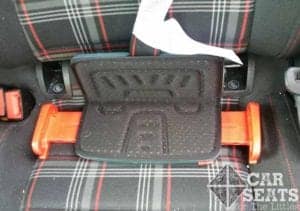
mifold folded into a waterfall seat bight
Sliding the mifold into the contoured portion of the vehicle seat moves the mifold into a position that provides a better belt fit on both my 7 and 10 year old models. This is great news!
However, since the correct mifold placement on a contoured vehicle seat is mentioned only in the manual and not on the mifold itself, we worry that caregivers will overlook this critical instruction and use the mifold incorrectly.
Incorrect mifold Placement

mifold placed incorrectly on a contoured vehicle seat
Here we see an incorrect placement of the mifold on the vehicle seat. Using the mifold flat on this type of vehicle seat placed the vehicle’s lap belt far down both my models’ legs, not over the hips where it’s supposed to be.
Correct mifold Placement

mifold placed correctly on a contoured vehicle seat
Folding the mifold back into the contour of my vehicle’s seat offered a better lap belt fit but both of my models found sitting on such a small portion of the padding very uncomfortable.
Though the lap belt fit is better with the correct mifold placement, the lap belt still lays more on my 10 year old model’s thighs than across her hips. She’s at the top end of the mifold’s size range and yet in my vehicle, she doesn’t get a great seat belt fit. I can’t imagine asking her to set up the mifold in a carpool vehicle and determine proper belt fit in a hurry.
Fit to Child
5 Years Old

mifold: 5 Years old, 43 pounds, 41 inches tall
This model is 5 years old, weighs 43 lbs, and is 41 inches tall. The shoulder belt fit him nicely with the seat belt adjuster strap, although it liked to slide off his shoulder, partially because he’s still a bit young and wiggly for such a low profile booster. The lap belt, however was nowhere near his hip bones; instead it fit almost at the midpoint of his femur. We aren’t comfortable with the seat belt riding in that position; we advocate that a better fit places the seat belt closer to the child’s hips. Setting 1 for the lap belt guides provided a nice width for him.
8 Years Old
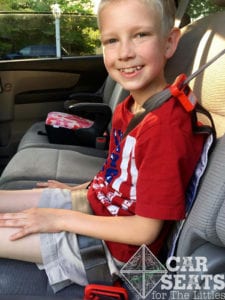
mifold: 8 years old, 45 lbs, 48 inches tall
This model is is 8 years old, weighs 45 lbs, and is 48 inches tall. He found the mifold to be pretty comfortable but there were a couple of issues with the seat belt fit.
The belt fit on him was a little closer to what we’d traditionally see with a booster, though the belt is still low across the thighs. The biggest issue that he had was sliding forward away from the vehicle seat bight. This caused him to slouch quite a bit. Not only is this uncomfortable for the child, this belt fit risks internal injury. He was unable to correct this slouch and move into a safer position. We wonder if the slick surface of the mifold contributed to this belt fit and conversely, if a non-skid surface on the side of the mifold facing the vehicle seat could prevent it. The mifold has a non-skid surface on the side where the child sits — perhaps having a similar surface on the back of the seat would help prevent this poor positioning.
*Note: if you have an angled seat bight, the mifold is positioned such that back of the product falls at the crease between the bottom of the raised seat bight and the vehicle seat bottom. This may have the back of the mifold angled up slightly.
Pro Tip
On our next ride, we were extra careful to position the mifold firmly against the vehicle seat bight and asking our model to sit down more carefully. This prevented the mifold from sliding forward. With this method, the mifold hardly moved during the drive. What a relief!
Age 12: Model 1

mifold: 12 years old, 89 lbs, 57.5″ tall
Our first 12 year old model weighs 89 pounds and is 57.5″ tall. She’s just a hair away from passing the 5-Step Test in our 2012 Honda Odyssey but her legs need to grow just a touch more so that her knees fully come to a natural bend at the edge of the vehicle seat. Like our 8 year old model, she had an issue with the mifold sliding forward from under her — it pushed her into a bit of a slouching position.
Pro Tip
Using the same setup method that we tried with our 8 year old model above, where we positioned the mifold firmly against the vehicle’s seat bight and asked our model not to wiggle too much while getting into the seat, once again prevented the mifold from sliding around.
The manual states that the belt guides can not touch the child. Even though this model is petite for her age and under the weight max of 100 pounds, she has outgrown the mifold because the belt guides were pushed against her sides. Additionally, we had an issue with the belt guides touching the slight contours of the vehicle seat and retracting on one side, creating asymmetry in the settings (one side was on setting 3, the other side got pushed back into setting 2). We feel that this could be prevented in future models by the settings locking into place.
With some other backless boosters, the shoulder adjuster strap is not always long enough to accommodate longer torsos. The mifold’s is ample, and in fact could have easily accommodated a much longer torso! She found the mifold uncomfortable, and hard to set up, largely because the belt guides fit so close to her and the seat belt was across the tops of her thighs.
Age 12: Model 2

mifold: 12 years old, 82 lbs, 5’2″ tall
Our next 12 year old model weighs 82 lbs and is 5’2″ tall. She no longer needs a belt positioning device of any kind but I was curious to try her out in it since she’s built differently than our other model.
At their widest position, the belt guides were just wide enough to not be in full contact with her body. Since she’s so tall and her knees easily come to a natural bend at the vehicle seat edge, she had no issues with slouching and her belt fit was closer to what we’d traditionally see with most boosters, though it was still a good bit lower on her upper thighs. She said that it felt strange and was tempted to pull it higher since that’s the kind of belt fit she’s used to but otherwise, she found the mifold fairly comfortable.
Important Information: Where to Find
FAA Approval

mifold FAA label
Airplane seats have lap belts only, so the mifold, and all booster seats are not approved for use on airplanes. The mifold label specifically prohibits using it on airplanes. The label is located on the shoulder positioning strap on the label most toward the mifold seat pan.
Date of Manufacture
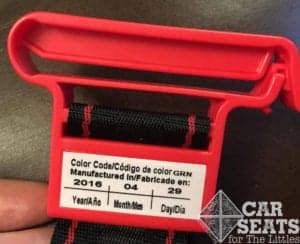
mifold Date of Manufacture label
The date of manufacture sticker is located on the back of the shoulder belt positioning clip. This seat has a 7 year expiration.
Manual Storage
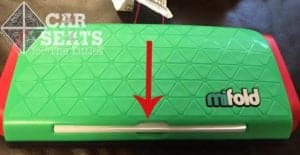
mifold Manual storage
There’s a storage compartment on the edge of the mifold, near the crease. After reading the manual, it tucks into the slit in the plastic shell for storage.
Pros
- Easy to adjust
- Lightweight
- Incredibly small
Cons
- Unpredictable belt fit which will vary by child’s size, vehicle, and seating position
- Too narrow to fit many children who are of an appropriate age and size for a backless booster
- Belt guides thath easily compress inward. This can result in asymmetrical belt guide settings and incorrect seat belt placement
- Belt guides and positioning strap are difficult for some children to adjust on their own
- Slippery surface on the vehicle seat side can result in the mifold sliding under the child
Overall Thoughts
We commend the mifold team for creating this innovative, new, compact, lightweight, seat belt positioner. We also applaud the team for getting so many people excited about a product that’s designed to make traveling safely with kids easier. The mifold’s narrow width could make it a great option for tight three across configurations. However.
Unfortunately, the mifold does have several significant drawbacks, most notably the completely erratic vehicle selt belt fit. We’ve seen quite a lot of unpredictable or even improper belt fit issues with the seat. We strongly suggest taking those issues into consideration when deciding if the mifold is right for your family and we suggest selecting a different product.
We are hopeful that the good folks at mifold will take some of these issues into consideration and in future versions improve on this innovative seat to make it a consistently safe option.
Note: we have removed references to a study evaluating the efficacy of belt positioning booster seat design until an interpretation of peer-reviewed data is available. We will provide an update if and when any future information or studies are released.
The mifold used in this review was not provided by mifold. As always, all opinions are our own.
